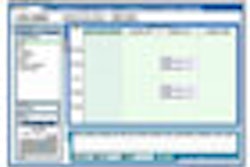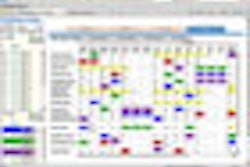The old game of telephone may be fun at a child's party, but communication omissions or errors between doctors -- or doctors and staff -- aren't as innocuous. Savvy hospitals take advantage of technology that improves the quality of their staff members' communication in the hope that patients will benefit and also that departments' workflow will become more efficient.
At the 2007 RSNA meeting in Chicago, researchers presented findings that point to the benefits of using technology in the hospital to address communication glitches that can get in the way of patient care.
Scan, don't type
Dr. Rajan Agarwal of the University of Pennsylvania Health System (UPHS) in Philadelphia and colleagues evaluated the error rate of manually recorded clinical histories. They sought to determine the potential benefit of scanning imaging request slips into a hospital's RIS for direct viewing by radiologists at time of interpretation.
"There's anecdotal evidence that when an incorrect clinical history is provided to the radiologist, it can lead to incorrect or delayed diagnosis, which can result in increased mortality, morbidity, and cost," Agarwal said. "The solution is to bypass the intermediary by directly scanning the request slips into the computer system."
UPHS performs more than 350,000 imaging exams per year. Agarwal and his group randomly selected 129 imaging request slips for CT scans from seven days in February and March 2007, then compared the clinical history on the request slip with the clinical history that had been manually entered into the RIS at the time of the phone order.
They categorized discrepancies into five groups:
- No discrepancy
- Computer history incomplete
- Paper history incomplete
- Disagreement between paper and computer
- Other
The group found that 62% of the studies evaluated had discrepancies between the paper request slip and the manually entered electronic information. Fifty-seven of the 129 cases (44%) had incomplete computer history, and of those 57 cases, 30 of the incomplete histories had clinically significant discrepancies.
"There's a high error rate under the old system, and many of the errors have clinical impact," Agarwal said. "We concluded that scanning requests directly into the computer system has the potential to dramatically reduce the error rate at low cost."
QA confidential
In another presentation at the RSNA meeting, a group from Beth Israel Deaconess Medical Center (BIDMC) in Boston reported that access to constructive criticism can improve radiology performance. Dr. Bettina Siewert and colleagues found that the use of a confidential, Web-based quality assurance (QA) reporting system encouraged nonradiology physicians to document radiology quality issues, which contributed to improved radiology performance.
"We found that using this QA reporting system initiates improvement in radiology performance," Siewert said. "It also allows for correction of the misperception of radiology QA issues."
Siewert performed a search of BIDMC's online QA database for cases submitted by nonradiology physicians between August 2004 and March 2007. The study included 178 cases with 181 QA issues. Of the 178, 28 (16%) were found to have no QA issue.
The cases were reported by various services, with the majority coming from medicine (68), followed by surgery (47), ob/gyn (28), emergency medicine (19), neurology (6), healthcare quality (HCQ) (5), pediatrics (4), and pathology (1).
The group found 142 clinical and 39 technical entries in subcategories of miss/error in interpretation, written report, interventional procedures, direct communication of results, study performed, and access to service. Thirty QA issues were found in these subcategories, with the highest number of issues in the category of written reports (8), and the next highest in the category of studies performed (7).
As a result of the study, 33 actions were taken to address the QA issues, including staff education, policy and guideline changes, equipment updates, and consumer education, Siewert said.
IT alert
E-mail isn't just for administrative information: it can be a useful tool for communicating nonemergent yet important clinical findings to referring physicians, according to an RSNA presentation by a group from Massachusetts General Hospital (MGH) and the Harvard School of Medicine, both in Boston.
Dr. Gerry Choy and colleagues used an automated e-mail-based important finding alert system that had been integrated into MGH's existing IT infrastructure as an adjunct communication tool. It works when radiologists highlight key results with a specific phrase the system recognizes, which then prompts it to generate an e-mail alert to referring physicians. If the e-mail isn't acknowledged, a fax with the information is sent to the doctor's office.
"Studies have found that referring physicians expect radiologists to communicate important findings not only via conventional report, but also directly," Choy said. "And in fact, many successful malpractice lawsuits are based on the failure to report important findings. This type of software package can help radiologists improve communication as well as patient care."
The group analyzed radiology reports dictated between January 2005 and December 2006. Of the reports in which an important finding e-mail alert had been sent, Choy analyzed 1,000 in detail by assessing the original subspecialty section, modality, type of finding, additional clinical management, and follow-up recommendations.
All the e-mail alerts were generated appropriately, with only nonemergent important findings communicated to the referring physician. Sixty-seven percent of the e-mail alerts came from chest and abdominal imaging; 45% of the alerts were regarding definitive abnormalities. In more than half of the alerts (52%), additional imaging, clinical correlation, another procedure, or biopsy was recommended, Choy said.
Despite the positive results of the three studies, all the presenters acknowledged that incorporating a new technology or work protocol can be challenging: Not all hospitals acknowledge e-mail as a mode of clinical communication, for example, and training time and cost concerns can prevent or delay a new technology from being adopted, even despite its apparent benefits.
By Kate Madden Yee
AuntMinnie.com staff writer
December 6, 2007
Related Reading
Third-party software tools can optimize IT systems and workflow, December 4, 2007
Communicating abnormal findings to clinicians may not ensure follow-up, November 28, 2007
Developing a cost-effective image QA workflow with PACS, November 21, 2007
Tracking radiology performance with a dashboard, September 10, 2007
EMR tool creates feedback on critical findings, April 28, 2006
Copyright © 2007 AuntMinnie.com



















